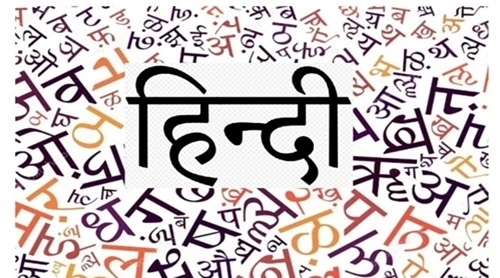In recent years, remote learning has become an essential part of the educational landscape, especially due to global events that have pushed learning online. Traditional teaching methods that worked in a classroom setting are not always suitable for virtual environments. As a result, educators have been seeking innovative ways to engage students and provide a more interactive learning experience. One of the most promising developments in this area is the use of AI video presenters. These AI-powered avatars are transforming how content is delivered to students, making lessons more engaging and accessible. In this article, we explore how AI video presenters are enhancing remote learning and their role in online education.
The Evolution of Online Education
Online education has witnessed exponential growth over the past decade, but it wasn’t until recent years that the true potential of technology in learning started to unfold. Platforms like Zoom, Google Meet, and Microsoft Teams have allowed students and teachers to interact virtually, but these platforms often fall short in creating a truly engaging experience.

With the rise of artificial intelligence (AI), however, educators are now able to enhance the learning process. AI video presenters, in particular, are revolutionizing online education by introducing lifelike avatars that can mimic human behaviors, expressions, and emotions. These avatars can present lessons, provide instructions, and interact with students in real-time, making remote learning feel more personalized and effective.
What Are AI Video Presenters?
AI video presenters are digital avatars powered by artificial intelligence that can be used to present educational content. These avatars are designed to appear realistic, with facial expressions, lip-syncing capabilities, and voiceovers that mimic human interaction. They can be customized to reflect the style, tone, and personality required by the content creator or educator.
What sets these AI presenters apart from traditional video lessons is their ability to engage with students in real-time. These avatars can convey emotions, gestures, and even humor, all of which help build a connection between the presenter and the audience. This connection is especially vital in remote learning environments, where students may feel disconnected from their instructors.
AI Video Presenters: A New Frontier for Engaging Remote Learning
The challenge with traditional video content is that it can feel one-dimensional and static. Students may zone out, multitask, or fail to absorb the information being presented. AI video presenters offer a more dynamic solution to this problem. They allow educators to create content that is not only informative but also engaging and interactive.
1. Engaging Students with Lifelike Avatars
One of the main benefits of using AI video presenters is their ability to create a more immersive learning experience. These avatars can simulate human interactions, such as maintaining eye contact, changing facial expressions, and even displaying empathy, all of which contribute to better student engagement. By mimicking real-life human behavior, AI video presenters create a virtual classroom environment that feels more connected and authentic.
For instance, platforms like invideo AI Presenter allow educators to create avatars that speak in multiple languages, add customised scripts, and adjust the tone and expression of the avatar, enhancing the learning experience for students worldwide. This capability is particularly useful for educators teaching multilingual classrooms or subjects that require nuanced expression.
2. Improved Learning Experience through Personalization
One of the significant challenges in remote learning is that students often have different learning preferences. While some may prefer to learn through reading, others might find videos more helpful. With AI video presenters, content can be personalized to fit the learner’s style. Whether it’s a more visual approach, a focus on tone and expression, or the option to choose an avatar that appeals to them, these presenters can be tailored to suit the needs of individual students.
Using tools like AI Video Generator, educators can create videos that incorporate personalized lessons, making learning more adaptable and inclusive. For example, an educator can choose a specific voice or create an avatar with a cultural background that resonates with the audience, helping to foster a stronger connection between the content and the students.
The Power of AI in Education
AI has already proven to be transformative in several industries, and education is no exception. The integration of AI in remote learning goes beyond just video presenters. Tools powered by AI are now being used to automate administrative tasks, grade assignments, provide feedback, and even create tailored study plans.
However, AI video presenters take things a step further by bridging the gap between technology and human interaction. They simulate the presence of an instructor without requiring an actual human teacher to be physically present. This not only frees up the teacher’s time but also allows students to engage with content at their own pace and convenience. These avatars can be programmed to teach anything from math and science to art and history, and they do so in a way that mimics the feel of a live lecture.
Benefits of Using AI Video Presenters in Remote Education
1. Improved Student Retention
Traditional educational content can sometimes be monotonous, which leads to disengagement and poor retention rates. AI video presenters, however, can break this monotony. With the help of advanced speech synthesis and facial animation technologies, these avatars can make lessons more lively and engaging. As a result, students are more likely to stay focused and retain information better, as the content is presented in a way that feels interactive and engaging.
2. Time Efficiency for Educators
Creating traditional educational videos can be a time-consuming process for educators. They need to script, record, and edit videos to make them polished and professional. However, AI video presenters streamline this process significantly. Educators can simply input their scripts and let the AI presenter handle the rest, including the animation, voiceover, and lip-syncing. This not only saves time but also reduces the need for additional video production skills.
3. Scalability and Flexibility
AI video presenters also offer unparalleled scalability. Teachers can create one lesson and use it with multiple groups of students, ensuring consistent quality and content delivery. They can also update or modify videos with ease, making it easy to adapt content for new classes or subjects. This flexibility is especially valuable in large-scale online courses, where instructors may need to cater to hundreds or even thousands of students.
Overcoming Challenges in Remote Learning
While AI video presenters offer many advantages, it is important to address some potential challenges. The primary concern is accessibility. Not all students have access to high-speed internet or the necessary devices to view high-quality video content. For this reason, educators must ensure that AI-powered content is designed to be accessible on a range of devices and internet connections.
Another challenge is the potential for over-reliance on technology. While AI video presenters are an excellent tool, they cannot replace the human touch that many students need for emotional and intellectual support. Educators should aim to balance the use of AI with traditional teaching methods to ensure that students feel connected and supported in their learning journey.
Conclusion
AI video presenters are transforming the landscape of online education by providing a more interactive, engaging, and efficient way to deliver content to students. By using tools like AI Presenter and AI Video Generator, educators can create personalized and dynamic lessons that cater to various learning styles. These technologies not only improve student engagement and retention but also allow educators to save time and scale their teaching efforts.
As remote learning continues to evolve, AI-powered tools like video presenters will undoubtedly play a key role in shaping the future of education. By embracing these innovations, educators can offer a more engaging and personalized learning experience for students worldwide, preparing them for success in an increasingly digital world.








